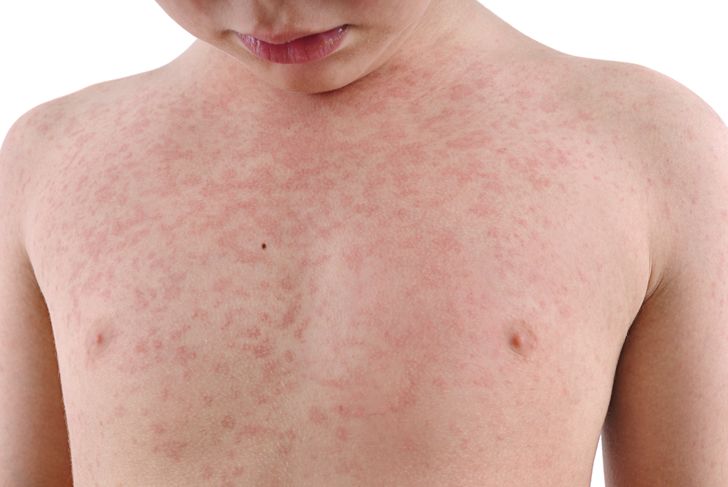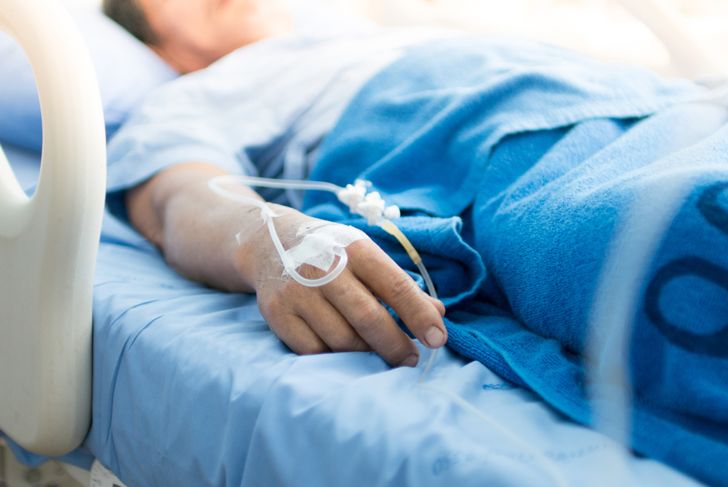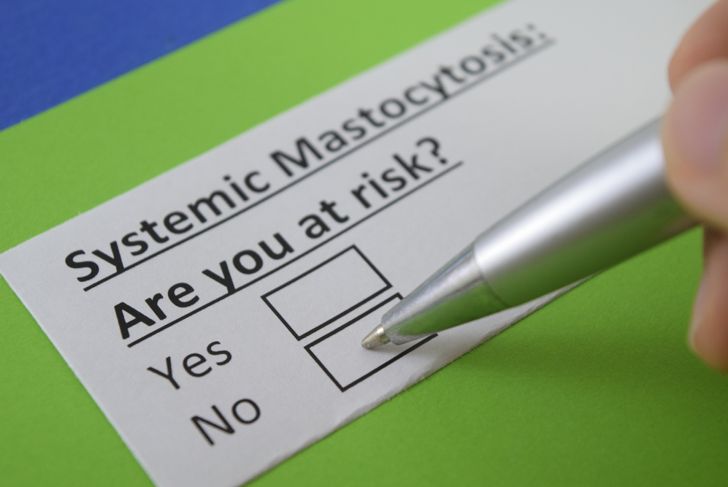Mastocytosis is a rare condition in which too many mast cells swell in the body’s tissues. Mast cells are a type of white blood cell which is part of the immune function in the body. These cells are responsible for releasing chemicals that create inflammatory responses. According to the National Institutes of Health (NIH), there are two forms of mastocytosis: Cutaneous mastocytosis, which only affects the skin, and is seen most commonly in children. Systemic mastocytosis, which affects other parts of the body, and is more common in adults. This type of mastocytosis is a fatal blood disease with no known cure. Since mastocytosis can affect different parts of the body, signs, and symptoms may vary.
Skin discoloration
The most common manifestation of cutaneous mastocytosis is tan-red macules (discolored areas of skin) which most often appear on the arms, legs, and abdomen. In young children with cutaneous mastocytosis, the symptoms usually resolve by puberty.
Skin Lesions
There is a symptom called Darier’s sign—a specific skin reaction in people with cutaneous mastocytosis. In Darier’s sign, skin that is scratched or stroked will develop lesions—which are usually swollen, itchy, and red—due to the mast cell overload, which becomes hyperactive. People with both kinds frequently have episodes of very itchy skin, and they may develop hives. In some cases (usually in children) the skin will blister.
Low blood pressure
Low blood pressure is a common symptom in people with systemic mastocytosis. The symptoms may be episodic, meaning that they surface once in a while (usually with a trigger), or chronic, indicating that they are always present. During a flare-up, a person’s blood pressure may drop, causing symptoms such as lightheadedness, dizziness, blurred vision, and fainting.
Abdominal pain
Common symptoms of systemic mastocytosis, abdominal pain may be accompanied by diarrhea, nausea, and vomiting. Such symptoms occur when mast cells in the gastrointestinal tract suddenly release great amounts of histamine. The symptoms are usually experienced as episodic rather than chronic, and they are more likely to appear after the person is exposed to a trigger. They may disappear within a matter of minutes or hours, but the person is often left feeling weak and sluggish for several hours.
Mental changes
When mast cells gather in excess in the brain, you can expect changes in mood or mental state. Some patients may experience anxiety or depression. Others may have episodes of confusion, disorientation, irritability, poor attention span, and impaired memory. Excess mast cells in the brain can also cause headaches, migraines, and episodes of fatigue, according to National Health Services (NHS).
Severe allergic reactions
Since mast cells are responsible for creating an inflammatory response to ward off foreign invaders, excess mast cells can result in a fatal response to allergens and foreign invaders. When there are many mast cells throughout the body from systemic mastocytosis, during an allergic reaction, there is an excess amount of histamine released in the body. This can result in an anaphylactic allergic reaction, which is considered a medical emergency. Anaphylactic shock can cause the throat and tongue to swell, blocking off airways. Other symptoms include a weak or rapid pulse; wheezing; abdominal pain; and other life-threatening reactions.
Other general symptoms
Excess mast cells have an effect on all organs and systems in the body. This means that a person will experience symptoms which correlate to the part of the body affected by mastocytosis. General symptoms experienced may include:
- Impaired temperature sensation
- Anemia and coagulopathy
- Shortness of breath
- Swelling of the liver
- Weakness
- Urinary symptoms (needing to pass urine frequently)
- Swelling of the lymph nodes
- Swelling of the spleen
- Acute leukemia
Treatments
Mastocytosis is caused by a mutation in the KIT gene. It is not a viral, bacterial, or fungal infection that can be eliminated from the body. Because of this, treatment focuses on symptom management. Antihistamines can help with Cutaneous mastocytosis. So can oral psoralen plus UVA (PUVA) therapy, steroid creams, or other solutions to be applied to the skin. Proton pump inhibitors, which reduce the amount of stomach acid, can treat gastrointestinal symptoms and bone pain in relation to systemic mastocytosis. People with this condition should carry injectable epinephrine—or an epipen—with them in case of anaphylaxis. The patient will need to stay away from known triggers, such as extreme changes in temperature, heat, certain medications, emotional stress, or certain articles of clothing or materials which may irritate the skin.

 Home
Home Health
Health Diet & Nutrition
Diet & Nutrition Living Well
Living Well More
More


















